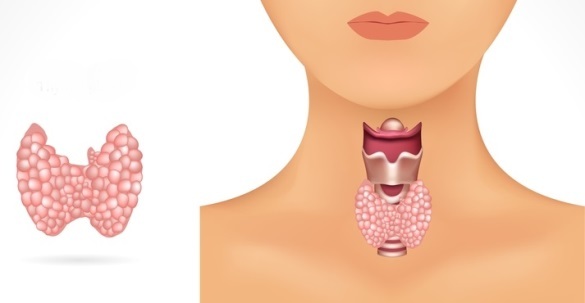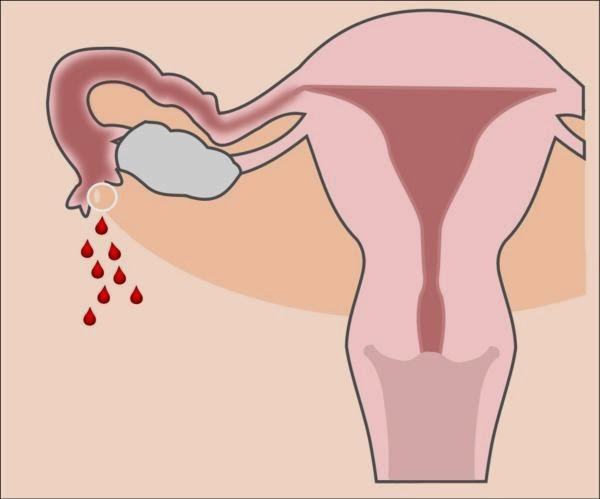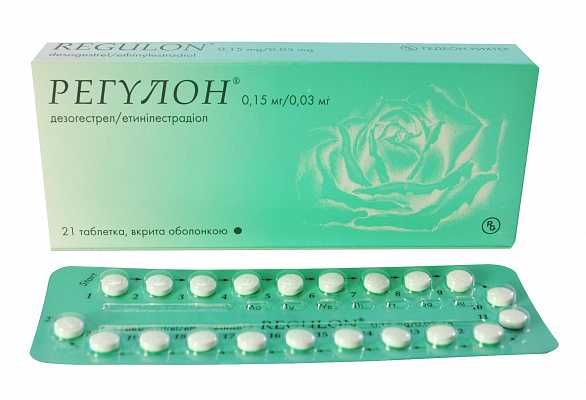The onset of menstruation after medical abortion depends on many factors. It will take a lot of time to fully restore a weakened woman's body. So expect the arrival of menstruation immediately after the abortion is definitely not worth it. This phenomenon greatly affects the reproductive system, leading to a stressful state.
After medical abortion, menstruation goes only after the restoration and normalization of the activity of the uterine endometrium. This process can take quite a while, which often makes a woman panic. But is it really worth worrying about in such a situation and how to solve the problem? In this article you will find answers to all your questions.
Features of the procedure
The modern way to terminate an unwanted pregnancy in its early stages does not mean surgical intervention, but the use of shock doses of special drugs. Such a procedure is absolutely always carried out under the supervision of a specialist. Only a doctor can determine exactly how the female body responded to such an intervention and when to expect the first menstruation after a medical abortion.
Despite the more gentle effect of drugs compared to traditional curettage, the consequences of such an operation can be quite serious. That is why such a procedure should be trusted exclusively by a specialist.
The significance of some factors
Normalization of the menstrual cycle after an abortion takes a long period. But certain conditions can affect this protracted process. Among them, it is worth highlighting such factors:
- general health of a woman;
- her age;
- concomitant pathologies of the reproductive system;
- failures in the hormonal background;
- abnormal thyroid function.

How quickly menstruation will go after a medical abortion depends on the condition of the patient as a whole. So, in the presence of chronic defects and acute forms of diseases, it is extremely difficult for a weakened body to return to a normal rhythm. Because of this, after a medical abortion, the periods may be too early or, conversely, appear with a strong delay.
What else affects the cycle
An important factor affecting the speed of rehabilitation is considered the period for which the abortion was performed. It is best to resort to such an intervention with a minimum delay when there is no connection between the fetus and the uterus.
No less significant condition is the presence of all sorts of complications. Of course, much also depends on the qualifications of the doctor and the intricacies of his work. And, in the end, the recovery process is affected by the funds applied directly during the procedure.
Discharge right after an abortion
The first blood clots leave the woman’s vagina after a couple of hours after applying a dose of the drug. Usually they have a brown tint.
After using prostaglandins, the discharge is abundant - they look like regular menstruation. At first they have a rich scarlet hue, and then they become lighter. Such discharge is a kind of confirmation of the successful completion of medical abortion.
Deviations from the norm
If after the procedure the blood leaves with yellow impurities, this indicates the presence of an infection in the body. Such a pathology appears due to a sudden change in microflora in the vagina. At the time of an abortion, this condition is considered extremely dangerous, against its background sepsis often develops and the likelihood of infertility increases significantly. If the situation becomes critical and the egg does not leave the uterus at this point, an emergency abortion is performed by vacuum or by surgery.

If, after the procedure, there is no discharge at all, this usually indicates cervical spasm. Her muscles are compressed and do not allow the embryo to leave the cavity. In other words, abortion is unsuccessful. This condition provokes the development of inflammation and abnormal formation of the fetus.
How much blood
Brown discharge is usually observed within two days before using prostaglandins. At the second stage of the intervention, there is a strong contraction of the uterus, accompanied by profuse blood loss. How much is the discharge after a medical abortion? Usually the process ends in 2 weeks.
Sometimes spotting does not stop until the arrival of the first normal menstruation. In this case, the gynecologist prescribes to the woman drugs that reduce the intensity of uterine contractions.

For personal hygiene, it is recommended to use only gaskets. Tampons simply prevent the embryo from leaving the uterine cavity. In addition, on the gasket, you can see the nature and shade of the discharge, which allows you to evaluate the picture. Ideally, the clots stop coming out after 10 days.
How many periods after a medical abortion begin
After abortion, menstruation should appear at the usual time. When does a menstruation begin after a medical abortion? Each woman has her own cycle: usually it is about 28-30 days.
If it is irregular, you should wait 35 days. If, after a medical abortion, menstruation does not start by this time, the gynecologist prescribes a woman a course of treatment aimed at normalizing reproductive function and blood flow in the uterus. For this, hormonal drugs are almost always used.

Prior to the first menstruation, it is strictly forbidden to take birth control pills and enter into intimacy. The selection of suitable oral contraceptives is performed by a gynecologist after the onset of the first menstruation. It is noteworthy that the means used before may become less effective after the intervention.
How much do menstruation go
The abundance of discharge and the duration of menstruation are determined by the stage of restoration of the vessels that saturate the uterus with blood, and the general condition of its microflora. What is the period after a medical abortion? Under normal conditions, menstruation lasts in the usual rhythm for a woman, about 5-7 days. At first, bleeding may be too intense, but in the future they become the same.
After about 7-10 days from the beginning of the discharge, menstruation ends. If a woman has too long periods, this may indicate the presence of various pathologies covering the uterus. This is how long menstruation goes after a medical abortion. In the event of a complication, the gynecologist should prescribe the patient an unscheduled ultrasound, a blood test and a smear intake to detect inflammatory processes.
Causes of abnormal bleeding after abortion
In the process of medication, blood secretions help the embryo exit the uterus. The condition of a woman is considered normal if a pad with 5 drops in the first days is filled every 3 hours.
Such a period after medical abortion provokes the appearance of pain in the corresponding region of the abdomen and lower back. If the gasket is filled in just an hour, moreover, the woman has a fever, dizziness or nausea, you must immediately call a team of doctors and go to the hospital.
In this case, we can talk about intrauterine bleeding. This can happen for several reasons:
- unsuccessful abortion, in which particles of the embryo remain in the uterus;
- infection
- high physical activity during abortion;
- clotting problems;
- non-compliance with the doctor’s instructions, for example, the use of birth control pills or intimacy;
- stress, psychological disorders.

With weakened immunity and a low pain threshold, blood discharge can pass with severe pain. Uncontrolled use of analgesics without the appointment of a specialist often causes the development of abnormal bleeding.
Causes of delayed menstruation after medical abortion
Menstruation will go after such an intervention, as soon as the woman’s body is fully restored. As already mentioned, medical abortion even more sparing compared to curettage carries a huge danger not only for reproductive organs, but also for all other systems. First of all, the hormonal background, and with it the whole organism, suffers from such manipulations. The drugs used during abortion inhibit the production of estrogen, which will certainly affect the activity of the ovaries and the endocrine system as a whole. That is why there may be a delay in menstruation after a medical abortion. It is perfectly acceptable if it lasts up to 10 days.
In addition, after an artificial termination of pregnancy, a woman, as a rule, suffers severe stress. At the same time, prolactin is intensively produced in her body. It is he who often becomes the reason for the delay in ovulation, which delays the onset of menstruation after a medical abortion.
How many days does such a delay last and when should you start to worry? Usually, the ovulation process is delayed no more than 10-14 days. But, if after a few weeks the woman did not have the expected menstruation, she should consult a doctor to correct the treatment.

It is worth saying that a possible cause of the delay, among other things, may be a pregnancy. Contrary to popular belief, ovulation in women who have had an abortion can occur even in the first month. For those who have strong immunity, it takes 2 weeks to restore the natural process.
Lean menses
Menstruation that is small in volume after an abortion is actually the norm. This phenomenon, like all other anomalies, is explained by an increased concentration of sex hormones in the bloodstream. It is these substances that cause contractions of the uterine endometrium, due to which the fetal egg leaves through the vagina. The drugs used during abortion negatively affect the processes of ovulation.
In addition, too meager menses may be the result of ongoing hormonal therapy prescribed by a gynecologist. In this case, a few drops may stand out at all. But in order to avoid all sorts of complications in identifying such a problem, a woman is still recommended to undergo an additional examination.
Likely Consequences
Medical abortion is considered more preferable for women of any age in comparison with classical surgical intervention. Usually, the drugs used in the process of such a procedure are effective and well tolerated by the body. True, in some cases, women face various problems after such an abortion. So, many complain of dizziness, skin rashes, nausea in the first hours after taking medication. But at the second stage of abortion, there is a high risk of abnormal bleeding.
Even before the procedure, the doctor must warn the patient about the possible consequences. The most common among them include the following conditions:
- hematometer - appears due to cervical spasm, characterized by the accumulation of clots in the cavity;
- placental polyp - a particle of the embryo remains inside, against which abnormal bleeding opens;
- deviations in the hormonal background;
- depressed, depressed state, suicidal attacks.
How to normalize a cycle
Ovarian activity is always impaired after medical abortion. This happens due to lower levels of progestogen and estrogen. During rehabilitation, gynecologists most often prescribe oral contraceptives to their patients such as Mikroginon and Regulon - such drugs are necessary to restore ovarian function, hormonal levels, the natural process of ovulation and normalization of menstruation after a medical abortion.

How long does this therapy take? The answer to this question is determined purely individually. However, according to gynecologists, women are allowed to plan their next pregnancy only after 6 regularly appearing menstrual cycles. Moreover, none of them should have any problems and deviations.